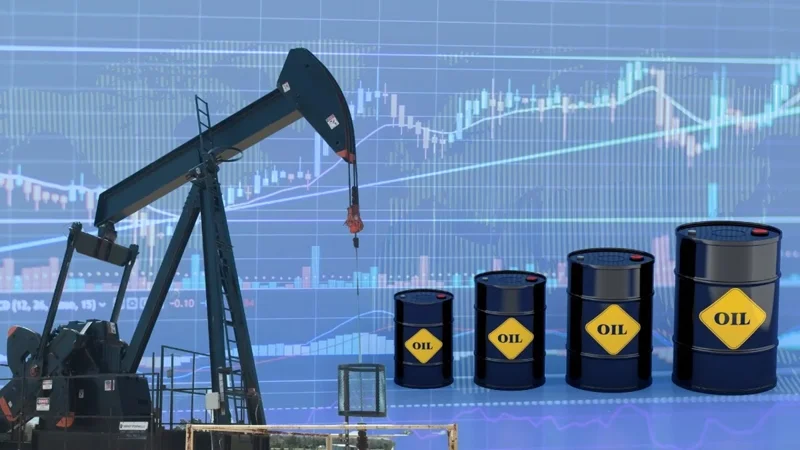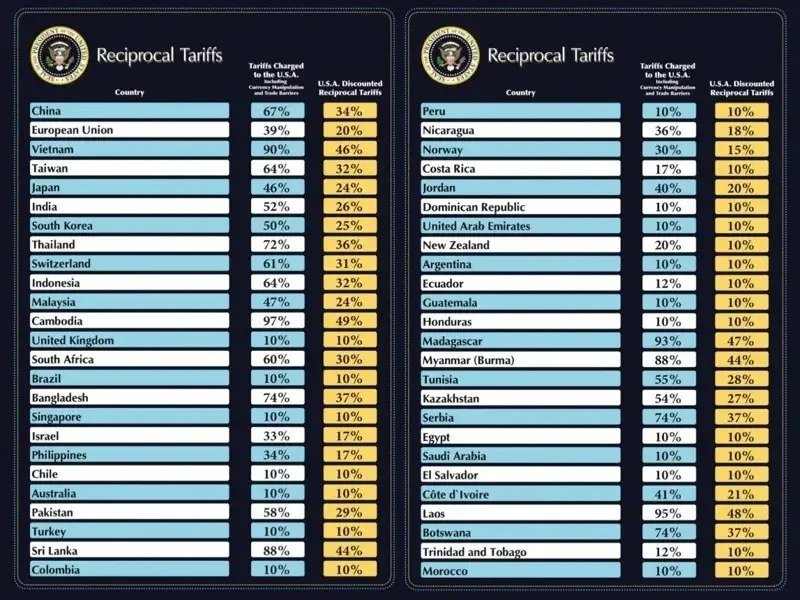Oil, GDP, and the trade war: What is driving Kazakhstan’s economy today?
Modern external challenges—such as Donald Trump’s tariff policy and the ongoing trade war between the United States and China—are significantly impacting the global economy. But where does Kazakhstan stand in this geopolitical turbulence, and what is the country’s economic outlook? In this report a Kazinform News Agency correspondent explores the issue.

Trade war escalation
The Applied Economics Research Center (AERC) has released its macroeconomic review for the first quarter of 2025. Experts suggest that if the conflict continues and a broader crisis unfolds, the U.S.-China trade war could negatively affect Kazakhstan as well.
Major global changes began on April 2, 2025, when the U.S. introduced a sweeping package of tariffs. Under Donald Trump’s “America First” policy, Kazakhstan was included on the list of countries subject to the new duties. To address trade imbalances, the U.S. imposed a flat 10% tariff on all imports, but specific countries faced significantly higher rates: 20% for the EU, 27% for India and Kazakhstan, 24% for Japan, and 46% for Vietnam. China was hit with a combined tariff of 65% (including an additional 34% surcharge), and for certain goods, rates reached as high as 245%.

According to experts, the escalation is already having negative effects on the U.S. economy itself. Although the American economy had seen eleven consecutive quarters of steady growth, GDP rose by just 2.4% year-on-year in the last quarter of 2024, and signs of slowing are becoming more apparent in 2025. The International Monetary Fund (IMF) sharply revised its U.S. growth forecast for 2025 downward—from 2.7% to 1.8%.
“According to WTO estimates, global trade volume in 2025 will shrink by 0.2% compared to 2024—3 percentage points lower than it would have been without the U.S. tariff hikes. The IMF also revised its global growth forecast for 2025 downward in April, from 3.3% to 2.8% year-on-year,” the AERC report states.
Economist Arman Beisembaev highlights the indirect risks for Kazakhstan:
“Apart from the fact that the U.S. is a leading oil producer and China a major consumer, Trump’s aggressive drilling policy is rattling the markets. The U.S. has the capacity to produce significant volumes of oil, and if they unleash this supply onto the market, it will create a major imbalance. At some point, oil supply could exceed demand.”
Recently, the U.S. and China agreed in Swiss negotiations to reduce mutual tariffs for 90 days. U.S. tariffs on Chinese goods will drop to 30%, while Chinese duties on U.S. exports will decrease to 10%.
Kazakhstan and the global oil market
The U.S. trade policy has affected global oil prices amid fears of an economic slowdown. Brent crude prices showed a general downward trend during the first quarter of the year, with the exception of early January and late March.
Meanwhile, OPEC+ announced an oil production quota increase starting in May 2025 by 411,000 barrels per day, equivalent to three months’ worth of incremental growth. Kazakhstan's new quota stands at 1.4 million bpd, Russia’s at 9 million, and Saudi Arabia’s at 9.2 million.
Kazakhstan is vulnerable to external shocks in the oil market.
“Oil prices are under pressure, and this is going to hit Kazakhstan. If prices fall below $50 a barrel, it spells trouble for our economy, which already suffers from a budget deficit and a shrinking National Fund. Our economy depends heavily on imports, and declining foreign currency revenue puts us at further risk,” Beisembaev says.

In 2024, transfers from the National Fund accounted for 31% of Kazakhstan’s national budget revenues. A fall in oil prices threatens to reduce this funding, which is redistributed from the central government to the regions.
In Q1 2025, National Fund revenues dropped by nearly 40% due to lower oil prices, worsening Kazakhstan’s balance of payments. Meanwhile, the economy continues to show signs of overheating: the short-term economic indicator (STEI) rose by 8.3% compared to Q1 2024, while inflation accelerated to 10% in March, driven largely by the rising cost of services.
“Further deterioration in the global environment could derail current growth. Overheating combined with external factors has already pushed inflation up,” notes AERC Director General Zhanibek Aigazin.
AERC forecasts the average Brent oil price in 2025 at $74.60 per barrel, a downgrade from the January estimate of $81.00, due to growing geopolitical risks and tariff measures targeting key trading partners, including Canada, Mexico, and China.
According to the Finance Ministry’s State Revenue Committee, Kazakhstan’s exports to the U.S. in 2024 totaled $1.97 billion (2.4% of total exports), and about 95% of these exports—primarily oil, uranium, silver, and ferroalloys—are not subject to new tariffs.
“An open, export-oriented economy embedded in global commodity and logistics chains, Kazakhstan inevitably faces multi-level indirect impacts from trade conflicts between major powers—especially during the ongoing U.S.-China trade confrontation,” the AERC analysts conclude.
Where is GDP headed?
In April, the IMF downgraded its 2025 GDP growth forecast for Kazakhstan from 5.5% to 4.9%, citing continued global instability. However, the 2026 forecast was slightly upgraded from 4.1% to 4.3%. Similarly, the Asian Development Bank (ADB) lowered its 2025 estimate to 4.9% while keeping the 2026 projection unchanged at 4.1%.
The World Bank also revised its forecast for 2025 downward from 4.7% to 4.5%.
Despite this, the Ministry of National Economy of Kazakhstan reports that GDP grew by 6% in the first four months of 2025, with particularly strong growth in transport (22.4%), trade (7%), agriculture (3.9%), and communications (2.6%).
Still, economists caution against over-optimism:
“The problem is that most investments in fixed capital come from the government, not private businesses. Without the state, there would be no capital investment at all. So, today’s economic growth is largely driven by massive public spending,” Beisembaev explains.
In conclusion, global trade conflicts, though indirect, significantly impact Kazakhstan’s economy, which remains heavily dependent on export prices and external market conditions that are currently undergoing rapid change.
Earlier, it was reported that during the Informal Summit of the Organization of Turkic States, President of Kazakhstan Kassym-Jomart Tokayev emphasized the need to utilize the Organization’s potential to diversify supply chains for oil, gas, uranium, and other goods.
